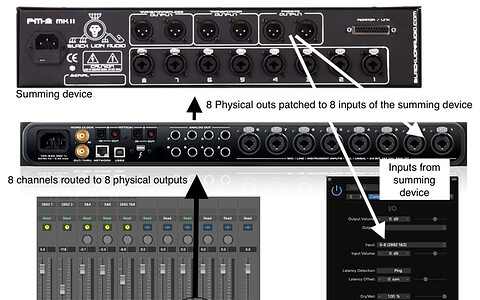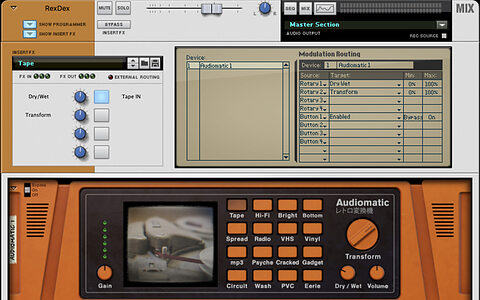
Audient overhaul their interfaces
iD series gains MkII status, plus a new affordable EVO recording bundle has been unveiled.
To find the exact phrase, put the words in quotes or join them together with a plus sign e.g. live+recording or "live recording".
To find, say, all live recording articles that mention Avid, enter: live+recording +avid - and use sidebar filters to narrow down searches further.

iD series gains MkII status, plus a new affordable EVO recording bundle has been unveiled.


New channel strip evokes classic British consoles, and combines preamp, EQ and compression.

If regular open mic nights aren’t quite right for the emerging army of knob‑twiddlers, loopers and beatmakers, where do we go to perform?

For their latest album, You Me At Six threw out the rulebook and spent six weeks at a residential studio in Thailand. Producer Dan Austin was at the helm.

While it’s obviously a great idea to seek tips, tricks and guidance when you’re learning how to mix, and to consider how you might apply that advice, you also have to be careful that in the process of applying it you don’t lose sight of the big picture.

Eventide have put their out‑there reverb effect into a compact pedal.

Felt Instruments’ Blisko Collection offers a unique blend of sound and motion.

Griffon’s new Fuzzyphone is part microphone, part fuzzbox!

We check out Korneff’s vibey take on a tube‑laden FET compressor.

Today’s teenagers see nothing odd about playlisting The Beatles and Sinatra cheek by jowl with trap‑metal and drill. Music of the past is seen as a canon to be added to, not an embarrassment to be left behind. This seems to me a very positive change...

It’s not always obvious in Logic Pro X how to go about incorporating hardware into your workflow; we show you how.

Now you can rock the MOD on your desktop!

NI’s new instrument makes owning and playing a Stradivarius easier than ever before!

Ocean Way’s newest studio speakers bring the sound of ’70s horn‑loaded mains to the nearfield monitor format.

We explore Ableton Link, record arm options and other new features from the 2020.9 update.

I enjoyed Hugh Robjohns’ excellent article ‘Patchbays In The Modern Studio’ [SOS December 2020] but one point he made left me confused...

My church is using Shure SE‑215CL in‑ear monitoring with PreSonus HP2 personal amplifiers, and the sound is distorted...

I cannot be the only person connecting two rooms with Dante, so is there a smarter way to use Dante Via for this? Or is there a smarter, better way to connect these two rooms?

We explore a couple of ways to add analogue warmth with the Reason Mixer.